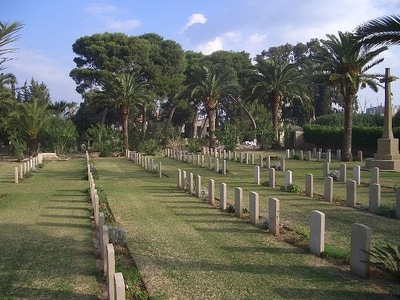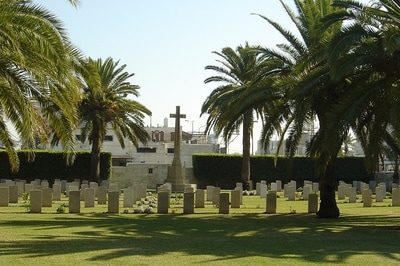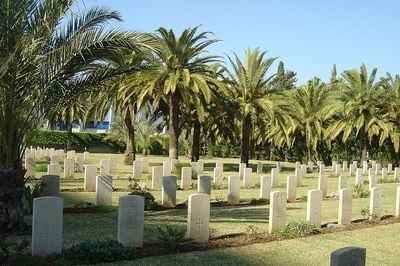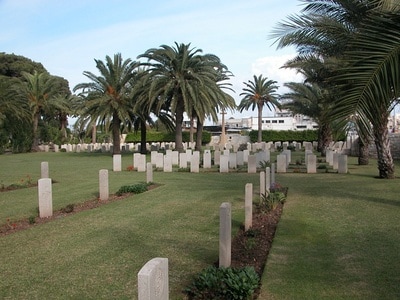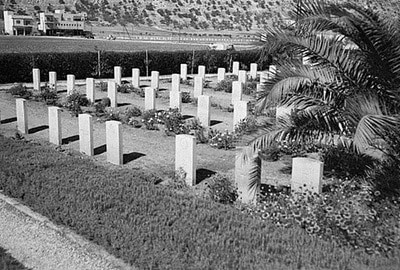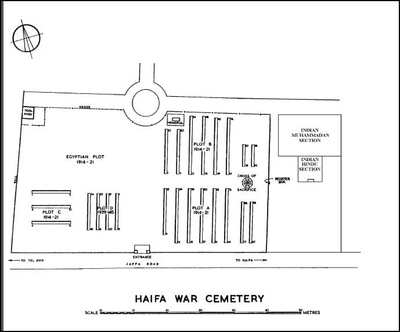HAIFA WAR CEMETERY
Haifa
Israel and Palestine (Including Gaza)
Location Information
Haifa War Cemetery lies 3 kilometres from the central railway station on the Tel-Aviv road.
From the south on Highway 4, the cemetery is on the left hand side, just before shops and Haifa docks. 300 metres after the cemetery turn left into Dugit Street. Turn left at the traffic lights and the cemetery will now be on the right hand side, 300 metres after the lights.
Visiting Information
The Cemetery is permanently open and may be visited at any time.
Wheelchair access to the cemetery is possible via the main entrance.
Historical Information
Haifa was captured by the Mysore and Jodhpur Lancers on 23 September 1918 and the 33rd Combined Clearing Hospital was moved to the town on the 15 October. Haifa War Cemetery, which was originally part of the German cemetery, was used mainly for hospital burials, but some graves were brought in from the battlefields
Haifa was of great strategic importance during the Second World War because of its deep water harbour and airfield. It was also the terminus of the railway line from Egypt and of the Kirkuk-Haifa oil pipeline. Haifa became one of the main supply bases and arms depots serving the Middle East forces and a large naval depot was established at Haifa Bay. The cemetery was again used during the early part of the war until the new war cemetery at Khayat Beach was opened.
Haifa War Cemetery now contains 305 Commonwealth burials of the First World War, 86 of them unidentified. Second World War burials number 36.
Cemetery pictures used with the permission of the Commonwealth War Graves Commission
Haifa War Cemetery lies 3 kilometres from the central railway station on the Tel-Aviv road.
From the south on Highway 4, the cemetery is on the left hand side, just before shops and Haifa docks. 300 metres after the cemetery turn left into Dugit Street. Turn left at the traffic lights and the cemetery will now be on the right hand side, 300 metres after the lights.
Visiting Information
The Cemetery is permanently open and may be visited at any time.
Wheelchair access to the cemetery is possible via the main entrance.
Historical Information
Haifa was captured by the Mysore and Jodhpur Lancers on 23 September 1918 and the 33rd Combined Clearing Hospital was moved to the town on the 15 October. Haifa War Cemetery, which was originally part of the German cemetery, was used mainly for hospital burials, but some graves were brought in from the battlefields
Haifa was of great strategic importance during the Second World War because of its deep water harbour and airfield. It was also the terminus of the railway line from Egypt and of the Kirkuk-Haifa oil pipeline. Haifa became one of the main supply bases and arms depots serving the Middle East forces and a large naval depot was established at Haifa Bay. The cemetery was again used during the early part of the war until the new war cemetery at Khayat Beach was opened.
Haifa War Cemetery now contains 305 Commonwealth burials of the First World War, 86 of them unidentified. Second World War burials number 36.
Cemetery pictures used with the permission of the Commonwealth War Graves Commission
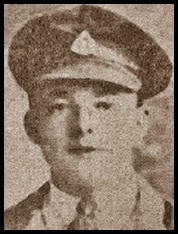
101935 Private
John James Grasshorn Fort
Royal Army Medical Corps 33rd Casualty Clearing Station
Died 30th October 1918, aged 20.
Plot B. 24.
John James Grassham Fort was born in Padiham in 1898 the son of Thomas and Elizabeth Ann Fort. Enlisted in Burnley, Lancashire.
John James Grasshorn Fort
Royal Army Medical Corps 33rd Casualty Clearing Station
Died 30th October 1918, aged 20.
Plot B. 24.
John James Grassham Fort was born in Padiham in 1898 the son of Thomas and Elizabeth Ann Fort. Enlisted in Burnley, Lancashire.

